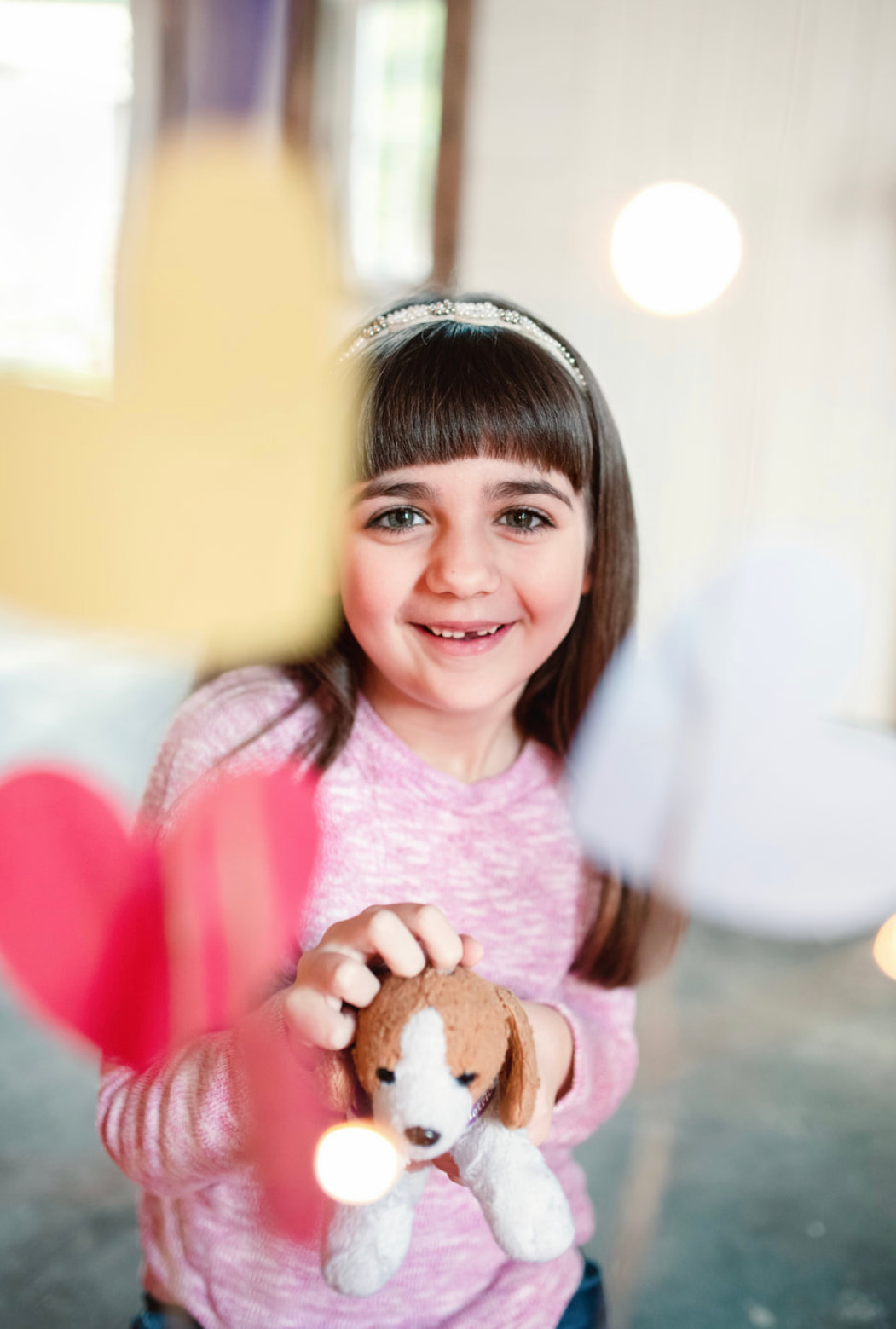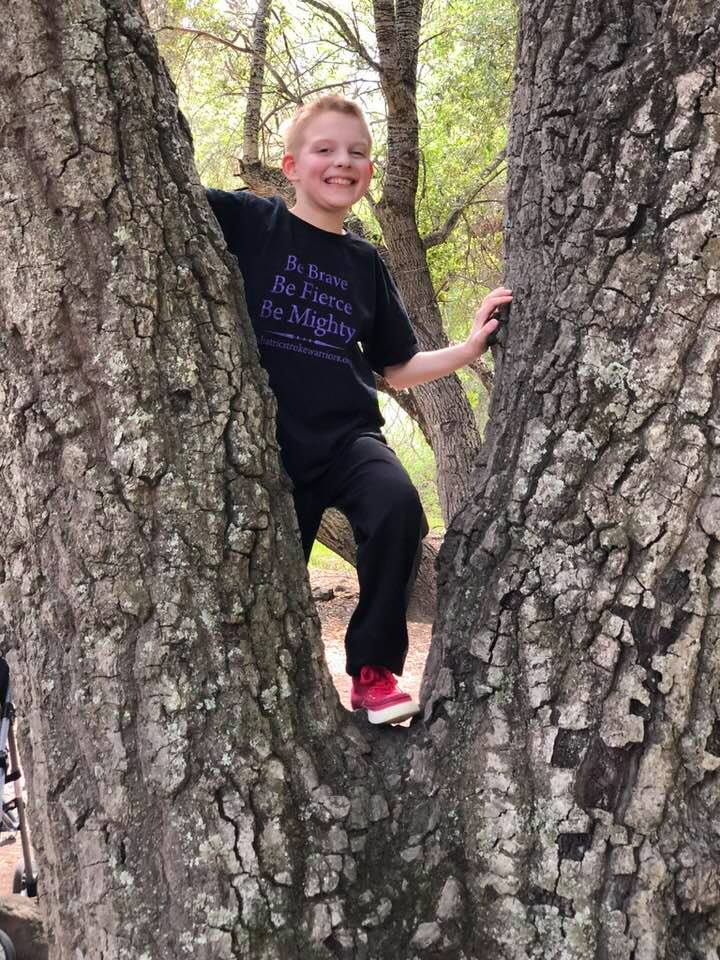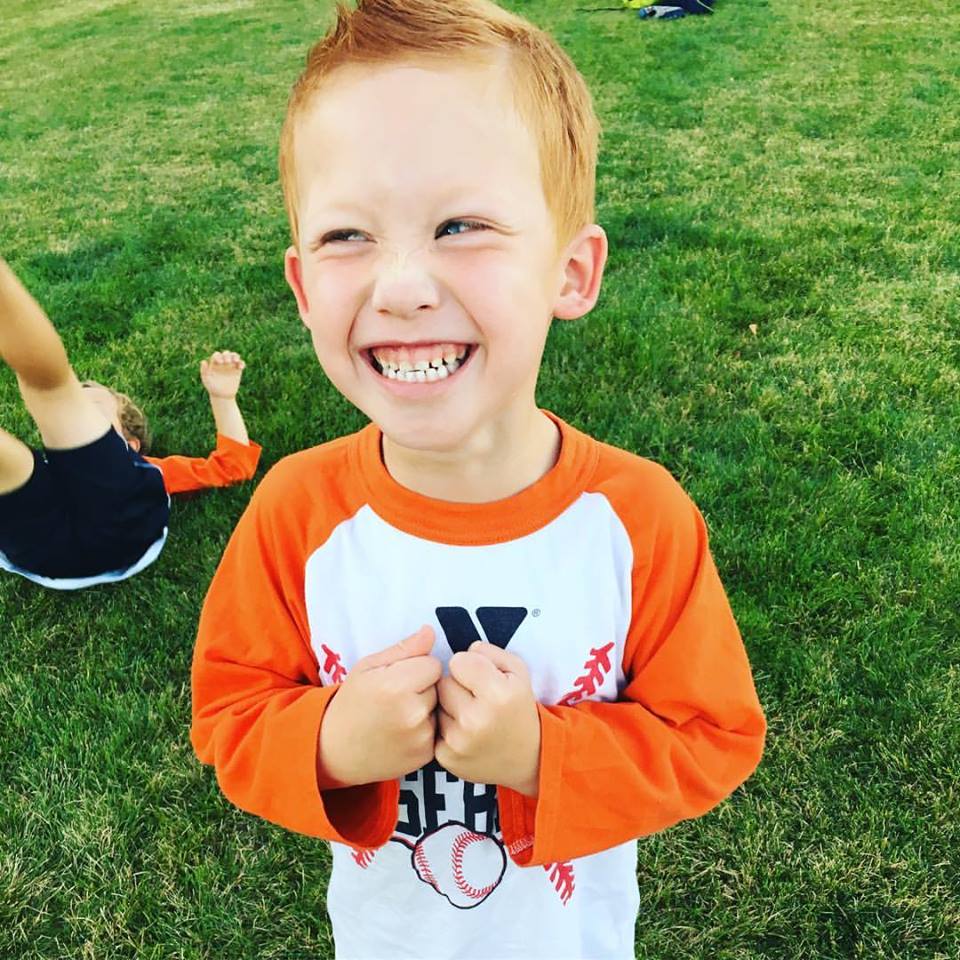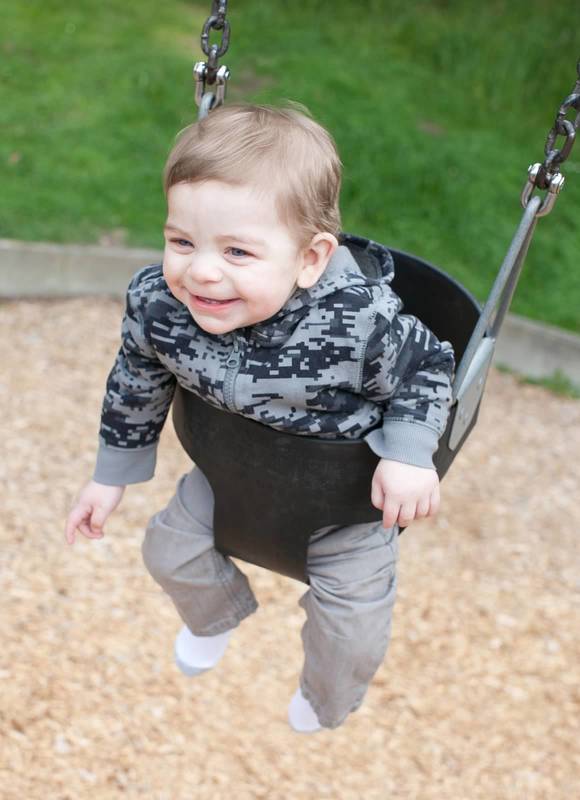Our family’s story with pediatric stroke began on October 20,2017. Makenzie was 5 years old and on her Pre-K field trip to the pumpkin patch with my parents. They were in the middle of the corn maze when she fell. A fall that came from nowhere, and what we would later learn was because she was having a stroke.
After this fall, Kenzie wouldn’t calm down and didn’t want to stand up, so my parents took her home. Kenzie just kept telling them that she didn’t feel good, she was tired and she wanted to lie down.
It was about 130pm when I call Shawn from work, he tells me he thinks Kenzie has the flu. I thought that was weird because she wasn’t acting sick that morning. I call mom and she explains in detail about the day. I ask her to call the consulting nurse and she does. Mom said that the consulting nurse was 85% sure it was nothing, but 15% said to bring her in.
At urgent care, the doctor, who had 17 years of pediatric emergency room experience, did all the standard tests, even had her run up and down the hallway, which she did. The doctor said he couldn’t do a CT scan at that time, but we could take her to Mary bridge if we wanted one and just wait and see what she was like in the morning. He diagnosed her with a concussion and sent us home.
Our house is about 2 miles from the urgent care and once we got home things started to happen quickly.
Kenzie tripped on the stair going into the house, she struggled to take her rain boots off, Shawn helped her and sat her in the recliner and she vomited, Shawn, scooped her up and headed to the bathroom, as I started to clean the recliner, he calls for me. I walk in and he says, check this out, he has Kenzie smile and she does, except only the right side of her face was moving, the left side wasn’t moving, and it looked like it was swollen. I looked at Shawn and said, “that isn’t right, we’re taking her in.”
We get to Mary bridge, and as we’re going through the triage process, I have Kenzie smile at the nurse, she had a shocked look on her face immediately turns to her computer and starts pounding on her keyboard. As we were admitted, the ER doctor comes in and goes through her vitals and orders a blood draw. We weren’t in the room 10 minutes when the Pediatric Neurologist enters and begins looking at Kenzie and orders a ct scan. I ask the Dr what she was thinking, and she responds it could be a migraine, epilepsy or a stroke. I turned to my sister and asked did she just say stroke? She responds yes, she said stroke. That’s when I knew.
Kenzie went to the CT Scan, then an MRI. It was 7:30 pm when we were admitted to the PICU. A few hours later, the MRI doctor would come into our room and tell us, “Your daughters had a stroke, the damage is irreversible and there could be a hole in her heart, any questions?” We were speechless. Right?! I remember looking over at Kenzie and thinking how is this even possible? The next 24 hours went so incredibly fast. More blood draws, an ultrasound of her heart and an EEG.
Our friends and family would arrive at the hospital. The staff, parents and students of her dance studio started a go fund me page, even made and sold Makenziestrong T-shirts. Being in the position of having to need that support is overwhelming. Food, gifts, tears, hugs, laughter and most importantly, prayers. We had an emotional support army and they rallied beside us.
Kenzie was a fighter through every second of this. At one point, the nurses said they needed to put a feeding tube in. It was a battle. The nurse would try to put it in, and it coiled. She tried again and it got stuck, they got it in, only for Kenzie to rip it out. At one point, my parents, Shawn and I each held a limb while the nurse attempted to get the feeding tube in. I was holding her weakened left arm and it was moving. Kenzie was fighting! and she was fighting with everything she had.
The first of her labs would all come back as negative or normal. No signs of damage to her heart, no holes and it was functioning normally. Her EEG would show no signs of seizures or abnormalities. We just kept asking ourselves, why would a healthy child have a stroke?
Kenzie didn’t move much during those first few days. The team at Mary Bridge was right alongside us, working on speech, physical and occupational therapy. At 5 days into our stay, Kenzie took her first wobbly steps, and it was beautiful.
After our first week at Mary Bridge, we were told that we were being transferred to Seattle Children’s. Upon arrival at Seattle Children’s, we checked in and one of our team nurses met us at the elevator and we walked into our room, there was our team of doctors, therapists and nurses waiting for us. Almost like a surprise party.
It was then that we met Dr. Catherine Amlie-Lafond. She would enter our room with a giant smile on her face and say, “I’m so happy to see you, I’ve been waiting for you since Tuesday.” As she pulls up a chair, she takes a purple bag off of her shoulder and hands it to me. It was a Warrior bag from Pediatric Stroke Warriors.
She says it’s from a wonderful organization that would benefit us. As I quickly look through the bag, there was a little stuffed dog. Kenzie would instantly name this dog, Sarah. Sarah would become very important to Kenzie, like we can’t go anywhere without it, important.
Dr. Lafond was the first person to sit with us and give us a crash course in pediatric stroke. Up until this point, no one had talked to us about pediatric stroke. We only knew that Kenzie had one. She would also tell us, that in some cases, there is no cause, and from what she had seen, this was going to be the case with Kenzie. She explained that even though the damage after stroke is irreversible, it does not determine the life Kenzie will lead.
We would spend about 3 weeks at Seattle Children’s. Kenzie had to re-learn everything, from potty training, how to get on and off the toilet, in and out of the bathtub and car, how to eat, get dressed, brush her teeth, walk, talk and even smile. It was intensive rehabilitation, with her working about 8 hours a day with her therapy team. We would quickly learn that our new normal would come with lots of challenges but even bigger triumphs. The first time her left hand squeezed our finger, the first time she walked with her gait belt, the first set of stairs she climbed, even our day pass out for dinner to Red Robin. By the end of our stay at Seattle Children’s Kenzie was walking. We were discharged with a wheelchair only to return it 2 weeks later.
I ordered a Brave Box for Kenzie, and it was my first correspondence directly with Kaysee at Pediatric Stroke Warriors. At the end of her email she said,” Above all, know that you and your family are not alone in this journey and that Kenzie is going to continue to move mountains”.
Kenzie did move mountains as she returned to school and dance. Kenzie loves to dance, luckily for us, it’s also a great form of therapy. We would also tackle our “new normal”. Our jobs. Kenzie would start full day Kindergarten, her physical, occupational and speech therapy, Doctors appointments, a few trips to the emergency room, Dance, and because that wasn’t enough, we added Pilates. I can’t say enough how Pilates has helped Kenzie’s core, her hand grip, strength and flexibility. We can’t thank Ms. Kim enough for not saying no when asked to work 1 on 1 with our daughter.
I’m not certain how any family navigated a journey like this before an organization like Pediatric Stroke Warriors existed, but I know they did. I can’t imagine how alone they must have felt. We are grateful for the ability to connect with other families, whether it’s on social media or at family support days. To be able to see Kenzie in a room full of other kids who are going through the same things as she is, is so important.
Kenzie is a pediatric stroke warrior, she is also a thriving kindergartner, a competitive dancer and has an unquenchable thirst for fun. Her stroke changed a lot of things, but it has made each of us stronger.
The journey has not been easy and we couldn’t have done this without the support of our friends, family, kenzie’s medical and therapy team and Pediatric stroke warriors.
#Makenziestrong
After this fall, Kenzie wouldn’t calm down and didn’t want to stand up, so my parents took her home. Kenzie just kept telling them that she didn’t feel good, she was tired and she wanted to lie down.
It was about 130pm when I call Shawn from work, he tells me he thinks Kenzie has the flu. I thought that was weird because she wasn’t acting sick that morning. I call mom and she explains in detail about the day. I ask her to call the consulting nurse and she does. Mom said that the consulting nurse was 85% sure it was nothing, but 15% said to bring her in.
At urgent care, the doctor, who had 17 years of pediatric emergency room experience, did all the standard tests, even had her run up and down the hallway, which she did. The doctor said he couldn’t do a CT scan at that time, but we could take her to Mary bridge if we wanted one and just wait and see what she was like in the morning. He diagnosed her with a concussion and sent us home.
Our house is about 2 miles from the urgent care and once we got home things started to happen quickly.
Kenzie tripped on the stair going into the house, she struggled to take her rain boots off, Shawn helped her and sat her in the recliner and she vomited, Shawn, scooped her up and headed to the bathroom, as I started to clean the recliner, he calls for me. I walk in and he says, check this out, he has Kenzie smile and she does, except only the right side of her face was moving, the left side wasn’t moving, and it looked like it was swollen. I looked at Shawn and said, “that isn’t right, we’re taking her in.”
We get to Mary bridge, and as we’re going through the triage process, I have Kenzie smile at the nurse, she had a shocked look on her face immediately turns to her computer and starts pounding on her keyboard. As we were admitted, the ER doctor comes in and goes through her vitals and orders a blood draw. We weren’t in the room 10 minutes when the Pediatric Neurologist enters and begins looking at Kenzie and orders a ct scan. I ask the Dr what she was thinking, and she responds it could be a migraine, epilepsy or a stroke. I turned to my sister and asked did she just say stroke? She responds yes, she said stroke. That’s when I knew.
Kenzie went to the CT Scan, then an MRI. It was 7:30 pm when we were admitted to the PICU. A few hours later, the MRI doctor would come into our room and tell us, “Your daughters had a stroke, the damage is irreversible and there could be a hole in her heart, any questions?” We were speechless. Right?! I remember looking over at Kenzie and thinking how is this even possible? The next 24 hours went so incredibly fast. More blood draws, an ultrasound of her heart and an EEG.
Our friends and family would arrive at the hospital. The staff, parents and students of her dance studio started a go fund me page, even made and sold Makenziestrong T-shirts. Being in the position of having to need that support is overwhelming. Food, gifts, tears, hugs, laughter and most importantly, prayers. We had an emotional support army and they rallied beside us.
Kenzie was a fighter through every second of this. At one point, the nurses said they needed to put a feeding tube in. It was a battle. The nurse would try to put it in, and it coiled. She tried again and it got stuck, they got it in, only for Kenzie to rip it out. At one point, my parents, Shawn and I each held a limb while the nurse attempted to get the feeding tube in. I was holding her weakened left arm and it was moving. Kenzie was fighting! and she was fighting with everything she had.
The first of her labs would all come back as negative or normal. No signs of damage to her heart, no holes and it was functioning normally. Her EEG would show no signs of seizures or abnormalities. We just kept asking ourselves, why would a healthy child have a stroke?
Kenzie didn’t move much during those first few days. The team at Mary Bridge was right alongside us, working on speech, physical and occupational therapy. At 5 days into our stay, Kenzie took her first wobbly steps, and it was beautiful.
After our first week at Mary Bridge, we were told that we were being transferred to Seattle Children’s. Upon arrival at Seattle Children’s, we checked in and one of our team nurses met us at the elevator and we walked into our room, there was our team of doctors, therapists and nurses waiting for us. Almost like a surprise party.
It was then that we met Dr. Catherine Amlie-Lafond. She would enter our room with a giant smile on her face and say, “I’m so happy to see you, I’ve been waiting for you since Tuesday.” As she pulls up a chair, she takes a purple bag off of her shoulder and hands it to me. It was a Warrior bag from Pediatric Stroke Warriors.
She says it’s from a wonderful organization that would benefit us. As I quickly look through the bag, there was a little stuffed dog. Kenzie would instantly name this dog, Sarah. Sarah would become very important to Kenzie, like we can’t go anywhere without it, important.
Dr. Lafond was the first person to sit with us and give us a crash course in pediatric stroke. Up until this point, no one had talked to us about pediatric stroke. We only knew that Kenzie had one. She would also tell us, that in some cases, there is no cause, and from what she had seen, this was going to be the case with Kenzie. She explained that even though the damage after stroke is irreversible, it does not determine the life Kenzie will lead.
We would spend about 3 weeks at Seattle Children’s. Kenzie had to re-learn everything, from potty training, how to get on and off the toilet, in and out of the bathtub and car, how to eat, get dressed, brush her teeth, walk, talk and even smile. It was intensive rehabilitation, with her working about 8 hours a day with her therapy team. We would quickly learn that our new normal would come with lots of challenges but even bigger triumphs. The first time her left hand squeezed our finger, the first time she walked with her gait belt, the first set of stairs she climbed, even our day pass out for dinner to Red Robin. By the end of our stay at Seattle Children’s Kenzie was walking. We were discharged with a wheelchair only to return it 2 weeks later.
I ordered a Brave Box for Kenzie, and it was my first correspondence directly with Kaysee at Pediatric Stroke Warriors. At the end of her email she said,” Above all, know that you and your family are not alone in this journey and that Kenzie is going to continue to move mountains”.
Kenzie did move mountains as she returned to school and dance. Kenzie loves to dance, luckily for us, it’s also a great form of therapy. We would also tackle our “new normal”. Our jobs. Kenzie would start full day Kindergarten, her physical, occupational and speech therapy, Doctors appointments, a few trips to the emergency room, Dance, and because that wasn’t enough, we added Pilates. I can’t say enough how Pilates has helped Kenzie’s core, her hand grip, strength and flexibility. We can’t thank Ms. Kim enough for not saying no when asked to work 1 on 1 with our daughter.
I’m not certain how any family navigated a journey like this before an organization like Pediatric Stroke Warriors existed, but I know they did. I can’t imagine how alone they must have felt. We are grateful for the ability to connect with other families, whether it’s on social media or at family support days. To be able to see Kenzie in a room full of other kids who are going through the same things as she is, is so important.
Kenzie is a pediatric stroke warrior, she is also a thriving kindergartner, a competitive dancer and has an unquenchable thirst for fun. Her stroke changed a lot of things, but it has made each of us stronger.
The journey has not been easy and we couldn’t have done this without the support of our friends, family, kenzie’s medical and therapy team and Pediatric stroke warriors.
#Makenziestrong




 RSS Feed
RSS Feed